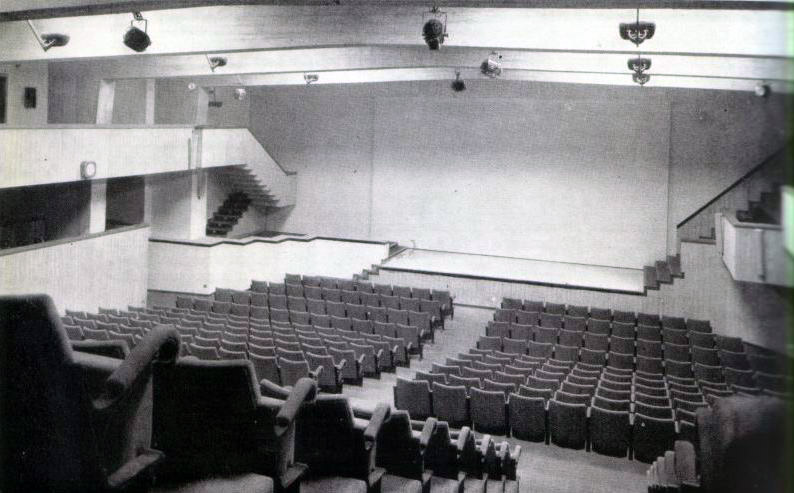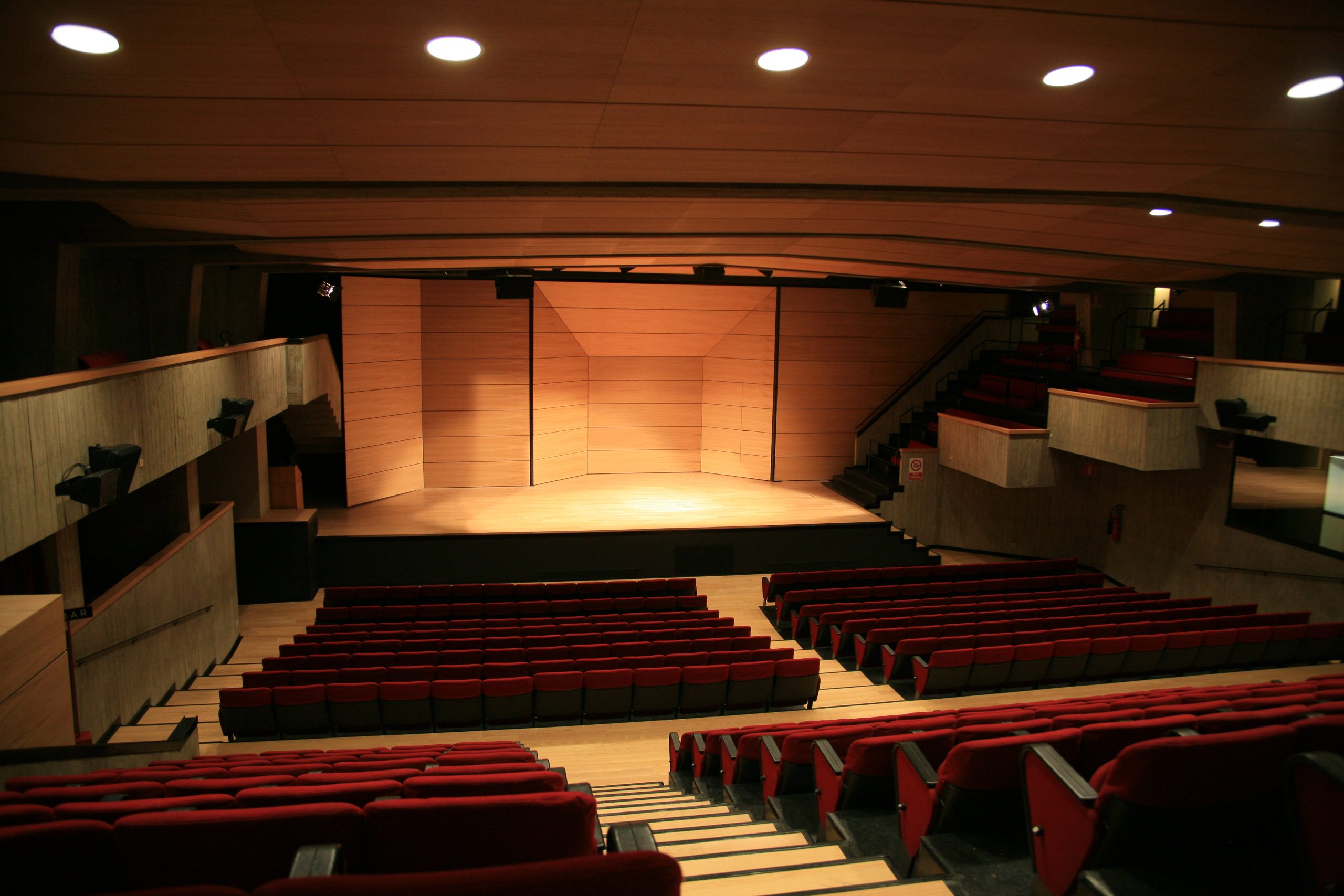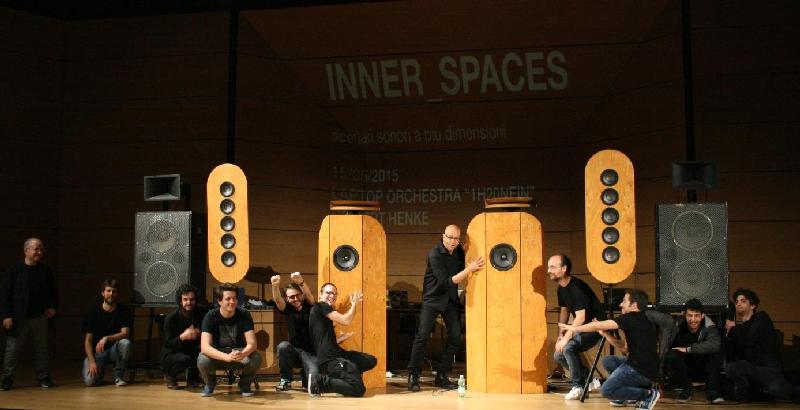Auditorium San Fedele
The San Fedele Auditorium of the Jesuit in Milan is a multipurpose space with a capacity of about 450 seats, located a few steps from the Duomo and the La Scala theater, hosts and produces cultural events, concerts, shows, film screenings, conventions and conferences. The auditorium was designed in 1964 by architects Bacchetti and Sanesi in a style very much in vogue at the time, characterized by the use of exposed concrete and formal asymmetry.

In 2010 the auditorium had been renovated. With the aim of contributing in an original way to the Milanese musical life, it was decided to act by introducing more suitable solutions and coatings to expand its acoustic characteristics, equipping the hall with the best sound diffusion technologies at the same time. The goal was to make the space capable of accommodating, in optimal listening conditions, the performances of chamber concerts as well as electronic music performances. Thanks to the intervention of the engineer Sandro Macchi, assisted by the architect Mario Broggi, the problems concerning the reverberation time, the homogeneous perception of all frequencies and sound dynamics were corrected, introducing an acoustic shell and a lateral wing on the stage in wood as well as a series of panels of the same material in the five spans of the ceiling.

Acousmonium SATOR
The most original aspect of the redevelopment of the auditorium concerned the choice of equipping it with a sophisticated audio system designed for the spatialization and orchestration of sounds, thus making the San Fedele Auditorium the only one in Italy permanently equipped with an acousmomiun. The first system developed by engineer Alvise Vidolin in 2010, included a ring of nine speakers and a Nexo subwoofer.
The acousmonium is a system of projection of sound in space, designed for the first time in Paris in 1974 by the composer François Bayle. The system of San Fedele is called SATOR, from the Latin palindromic inscription, the term sator means sower, cultivator and figuratively father, creator. In Christian contexts he alludes to some evangelical parables, in which he represents God the Father. The acousmonium SATOR was designed by the audio system manufacturer Eraldo Bocca, inspired by the criteria adopted in France by Denis Dufour and Jonathan Prager for the construction of the second generation acusmonium called MOTUS, and by the experience and advice of Annette Vande Gorne.
After some adjustment phases, the audio system has come to configure in the current arrangement with three concentric crowns on which about fifty loudspeakers differ in tone color, power and dispersion are activated by two digital mixers. As a last step, six supertweeter were placed on the ceiling of the auditorium and four midrange and four supertweeter speakers were installed on the balconies.
The morphology of the project is designed to guarantee an enveloping, multi-directional and symphonic listening situation to the public, offering perceptive experiences in multiple dimensions.
Since 2011, the CEID (Center of Electroacoustics and Digital Interactions) has been founded in San Fedele on an idea by Giovanni Cospito and Father Antonio Pileggi with the contribution of Dante Tanzi. The Center was born with these objectives: the development of the Acousmonium SATOR, the programming attentive to the dialogue between the great works of electronic music and the most recent productions with specially commissioned creations, the realization of training activities for young composers selected through the San Fedele Young Composer Prize, attention to spiritual contents, the proposal of new ways of listening to electronic music close to the symphonic and spatialized dimension of music in the light of the multimedia scenarios and artistic languages of our time.

15/05/2015 – Robert Henke e Laptop Orchestra 1h20Nein
Since 2012, concerts have been proposed in tuned with the latest musical ferments from the IDM galaxy, Dubstep, soundscape, ambient up to video art with particular attention to multimedia production and audiovisual interaction. INNER_SPACES was born in 2015, the highly successful exhibition with public participation, in collaboration with Savana, Plunge and other associations in the sector, which involves some of the main exponents of contemporary electronic research.
During these years, internationally renowned artists such as Robert Henke, Stephan Mathieu, Tim Hecker, Annette Vande Gorne, Rabih Beaini, Giuseppe Ielasi have performed groups and collectives such as Otolab, Optical Machines, Emptyset, Francisco Lopez, Bellows (Giuseppe Ielasi, Nicola Ratti), Robert Lippok, Valerio Tricoli, R / S (Peter Rehberg and Marcus Schmickler), Oren Ambarchi and Thomas Brinkmann and virtuosos of the acousmatic repertoire such as Franҫois Bonnet, Mats Lindstrӧm and Jonathan Prager. improvisational musicians of the caliber of Francesco Zago, Mario Marzi, Paolo Oreni and Achille Succi and world-famous video artists such as Andrew Quinn.
The musical activity immediately entered into open dialogue with the most prestigious realities operating in the field of musical research at an international level such as the Ircam Center Pompidou and the GRM (Groupe de Recherches Musicales) of Paris, the EMS (Elektronmusikstudion) of Stockholm, and musical groups such as the Intercontemporain Ensemble, the Klangforum Wien, the Actus Ensemble and in Italy with the Ricordi Historical Archive, the Milan Conservatory, Department of New Technologies and Musical Languages, UniMI, collaborating with Festivals such as Milano Musica and Miyo Settembremusica.
